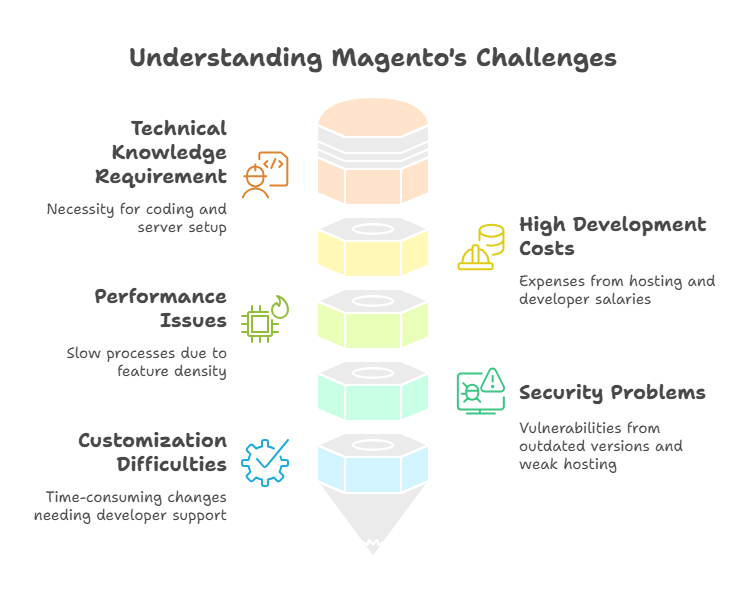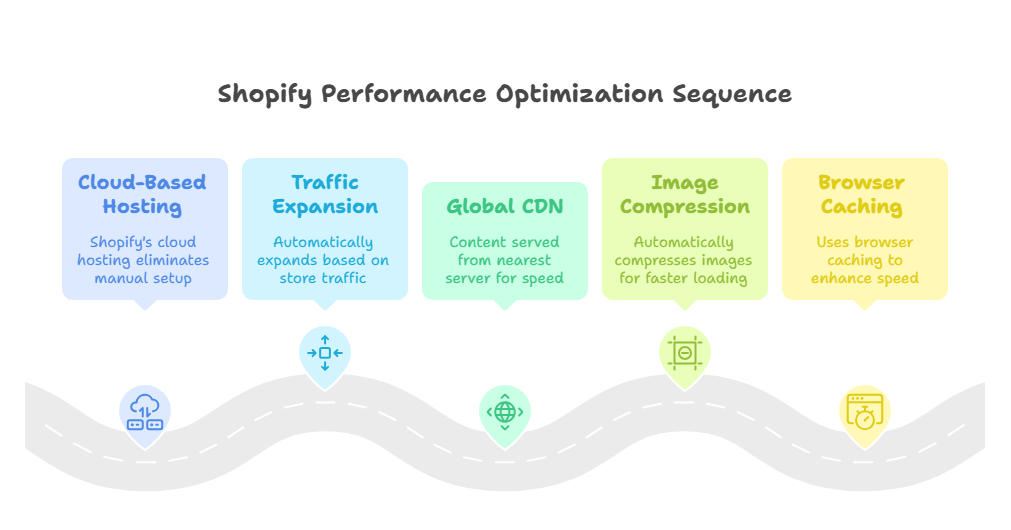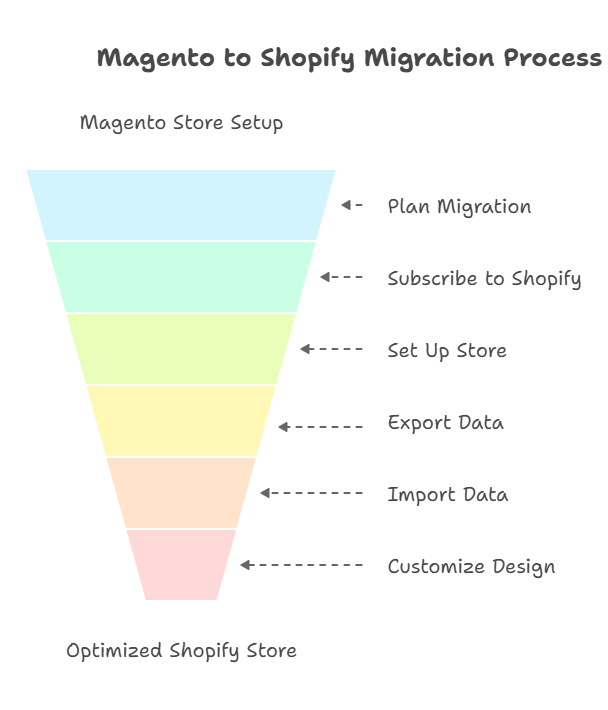Released in 2008, Magento is an open-source E-commerce platform used by businesses all over the world, to create and manage their online stores. It offers full customization, making it suitable for businesses that want full control over their website’s design, features, and functions.
Additionally, the platform is scalable, meaning it can expand or shrink based on your business needs. It can also manage multiple stores, currencies, and languages. These features make Magento a preferable choice for big enterprises that have wide and diverse customer bases.
Challenges of Using Magento
While Magento has a wide range of benefits, it also has certain challenges that make it complex. To better understand these challenges, let’s discuss them separately:
Needs coding or technical knowledge: Magento doesn’t provide hosting, it is self-hosted, making it necessary for businesses to hire a developer to build their website. It also requires businesses to set up their server and configure it, all by themselves, to optimize the platform. As a result, non-technical users may find it difficult to use without developer support.
High Development Cost: Although Magento itself is free, it does have other expenses, including powerful hosting fee, developer salary, and maintenance costs.
The salary of the developers are often high due to the complexity of the platform. Additionally, the customization and third party integration, such as payment gateways, add to the overall cost, resulting in high operational costs that many small businesses struggle with.
Performance Issues: Designed for Large-scale businesses, Magenta has a variety of features that add to its density, often resulting in slow processes and longer load times. It also requires a high-performance and efficient hosting system to handle high traffic without crashes or slowdowns.
Security Problems: It has been reported that some 500 Magento sites were the victims of hacking in 2020 as a result of payment skimming assault. Interestingly enough, among e-commerce stores from all over the globe that experienced cyberattacks in 2024, Magenta accounted for just 0.71%.
Magenta regularly releases security updates that businesses must implement, as outdated versions can cause significant danger to the website’s security, making it susceptible to exploitation. In addition, a weak or shared hosting environment increases risks.
Time-Consuming Customization: As mentioned earlier, Magento is complex to use, meaning developer support is necessary at almost every stage. Additionally, at times, even the minor design and functional changes require developer assistance, making the process time-consuming and slow.
With so many shortcomings, it often becomes difficult to handle an online store on Magento, especially if you are a small business owner with budget constraints. But then what should you do? Is there any alternative you can switch to? Yes! There is—Shopify!
Just like Magento, Shopify too is an E-Commerce platform where businesses can create and maintain online shops. But what sets Shopify apart from magneto is its accessible and affordable solutions that are simple to implement and use.

How Shopify helps you:
- Cost-effective: Shopify is a subscription-based e-commerce platform, with prices starting from Rs. 3380 for the basic plan to Rs. 34590 for the advanced plan in a month. While this platform is not free like Magneto, it is cost-effective, as it includes in-built hosting, security, and core features.
- In-built security: Unlike Magneto where coding is required to build a security system, Shopify includes automatic updates and security patches. In addition, the platform includes in-built fraud analysis, free SSL certificate, 3D secure checkouts, and more to ensure secure payments, encryption, and protection from malicious agents.
- No technical knowledge required: One of the best things about shopify is its user-friendly drop-and-drag interface and easy-to-use features. Since the platform doesn’t require developer support or technical knowledge, it can be used and implemented by anyone. This leads to a hassle-free and seamless process.
- Reliable Performance & Speed: Shopify’s in-built cloud-based hosting eliminates the need of manual setup, and can expand based on the store’s traffic. Shopify uses Global CDN which allows it to serve content to the users from the nearest server, speeding up page loading time. Additionally, it automatically compresses images and uses browser catching to ensure faster page speed
Wide Range of Themes & Customization: Unlike Magento where businesses have to take a developer’s help to customize their website and its features, Shopify offers a wide range of in-built themes and customization which can be easily used, without needing coding skills. This platform offers 170+ themes, both free and paid, for different industries. From colours and fonts to layouts and designs, Spotify has it all.
Integrated Payment Processing: One of the best advantages of using Shopify is its in-built payment processing system. Shopify offers Shopify payments which accepts payments of all kinds, be it credit/debit card, Apple pay, Google pay etc. This eliminates the need for an external payment processor.
In addition, if Shopify Payment is not available in a country, the user can integrate other third-party gateways, such as paypal, Amazon pay, etc. This hassle-free payment process helps provide seamless checkout experience to the customers.

Now that we are done exploring benefits of shopify, let’s discuss how you can step-migrate your business from Magento to Shopify:
- Plan the migration and Subscribe to Shopify
- Set up a shopify store with basic settings
- Export all the data from Magento to Shopify
- Import data into Shopify manually or using migration apps
- Review and clean up data for accuracy
- Customize the Shopify store design
- Set up 301 redirects to protect SEO
- Test the store before launching
- Launch the Shopify store and promote it
- Optimize for sales and long-term growth

While the management of a Shopify store is easy, the migration from Magento to Shopify can be really troublesome, especially for businesses with a vast product range. The migration involves data transfer, design adjustments, and functionality alignment, which can be overwhelming.
In such a case, hiring a Web Development Agency comes handy. It takes care of the migration process, releasing you from the burden. These agencies understand the intricacies of the task and can migrate your store effortlessly, thanks to their years of experience and expertise.
Need a hassle-free Magento to Shopify migration? Contact Bit Binders today and let the experts handle it for you!
